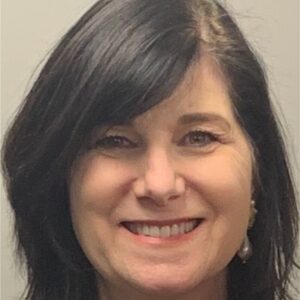How to serve those on Medicaid through assisted living
The rebounding economy and the continuing aging of the population mean that interest in "affordable assisted living"–serving those receiving Medicaid assistance–is growing among providers, according to three speakers at a session at the Assisted Living Federation of America (ALFA) annual conference.
The model allows providers to reach additional customers in the markets in which they already have properties or service offerings, said Jerome "Jerry" Finis, principal and CEO of Pathway Senior Living and one of the speakers in the "How to Make Affordable Assisted Living Work for You" session. And those potential customers have a growing interest in the model as well, he added; although the economy is recovering, the lingering effects of the Great Recession mean that adult children don't have the income or assets to support their parents.
Key operational issues with the model, according to Rod Burkett, president and CEO of BMA Management, include:
- State/federal program design;
- The payment rate and payment cycle;
- The role of gatekeepers;
- Barriers to property licensure/certification; and
- Barriers to Medicaid eligibility.
States may refer to, define and fund assisted living in varying ways, pointed out Wayne Smallwood, executive director of the Affordable Assisted Living Coalition. The Illinois trade association represents Supportive Living Program participants (affordable assisted living providers) operating since the late 1990s, now at 143 sites in 12,000 apartments in the state. Among funding options, Smallwood said, are low-income housing tax credits, grants, low-interest loans and, in some states such as Illinois, experimental use of Medicaid's 1915(c) home and community-based waiver program.
Obtaining support from all branches of state government and state regulators (and sometimes the federal government) is necessary but often difficult, Smallwood said. In an environment of increasing healthcare costs, however, providers can stress to officials that assisted living might enable them to "get budgets under control," he added, because services usually can be provided at a lower cost than traditional long-term care provided in nursing homes.
Operators should try to encourage government officials to make assisted living a separate line item in their states' long-term care budgets (currently a reality in 13 states), Smallwood advised. Otherwise, he added, assisted living providers will be competing for funding with providers of other types of services for the elderly, and officials may view home care as a higher priority.
Providers need to work to ensure that the government continues thinking of assisted living as community placement, Smallwood said.
But providers don't need to rely solely on Medicaid recipients for prospective residents, he added. Illinois, for instance, requires that a minimum of 25 percent of an assisted living facility's (ALF's) residents be receiving Medicaid assistance. Smallwood said that at most ALFs with which he is familiar, 60 percent of residents are Medicaid beneficiaries and the other 40 percent are private-pay residents.
Finis said that Pathway Senior Living has developed 12 affordable assisted living communities over the past 14 to 15 years using the low-income housing tax credit program. To achieve success in the affordable assisted living model, he added, providers need knowledge of affordable housing financing and need to help state agencies understand the need for affordable assisted living. Additionally, they need a development team that can work through the complexities of affordable housing financing and also must be committed to building competitive, high-quality, long-term assets, he added.
Burkett said that the 37 affordable assisted living properties managed by BMA Management have the same staffing levels, operations, services and levels of attractiveness as its other properties. The company is the largest operator of affordable assisted living properties in Illinois and the 16th largest overall assisted living operator in the country, with more than 3,600 licensed apartments.
"We work very, very hard to not let Medicaid create a second-class stigma to the residents we serve," he said, "and we found that serving all income levels creates very much of a professional and personal satisfaction," because, with a range of living options to offer, no prospective resident needs to be turned away.
When it comes to marketing ALFs for Medicaid beneficiaries, Burkett recommended staying away from slick-looking brochures; potential residents will think they can't afford to live there. BMA Management, he said, plans special events to encourage people to visit and also uses mass mailings and some newspaper advertising. An effective–and low-cost–method of attracting residents, however, he added, comes through the professional referrals derived from relationships established with sources such as senior centers, free clinics, doctor offices, the Medicaid office, Laundromats, Meals on Wheels programs and hospital discharge planners.
Some Illinois providers may face new challenges in August when health insurers become the payers of Medicaid services under a managed care model, Burkett said. Managed care companies are used to working with hospitals and doctors and need to be educated about assisted living and how it differs from senior housing and nursing homes, Finis added.
I Advance Senior Care is the industry-leading source for practical, in-depth, business-building, and resident care information for owners, executives, administrators, and directors of nursing at assisted living communities, skilled nursing facilities, post-acute facilities, and continuing care retirement communities. The I Advance Senior Care editorial team and industry experts provide market analysis, strategic direction, policy commentary, clinical best-practices, business management, and technology breakthroughs.
I Advance Senior Care is part of the Institute for the Advancement of Senior Care and published by Plain-English Health Care.
Related Articles
Topics: Articles , Executive Leadership , Housing , Operations











